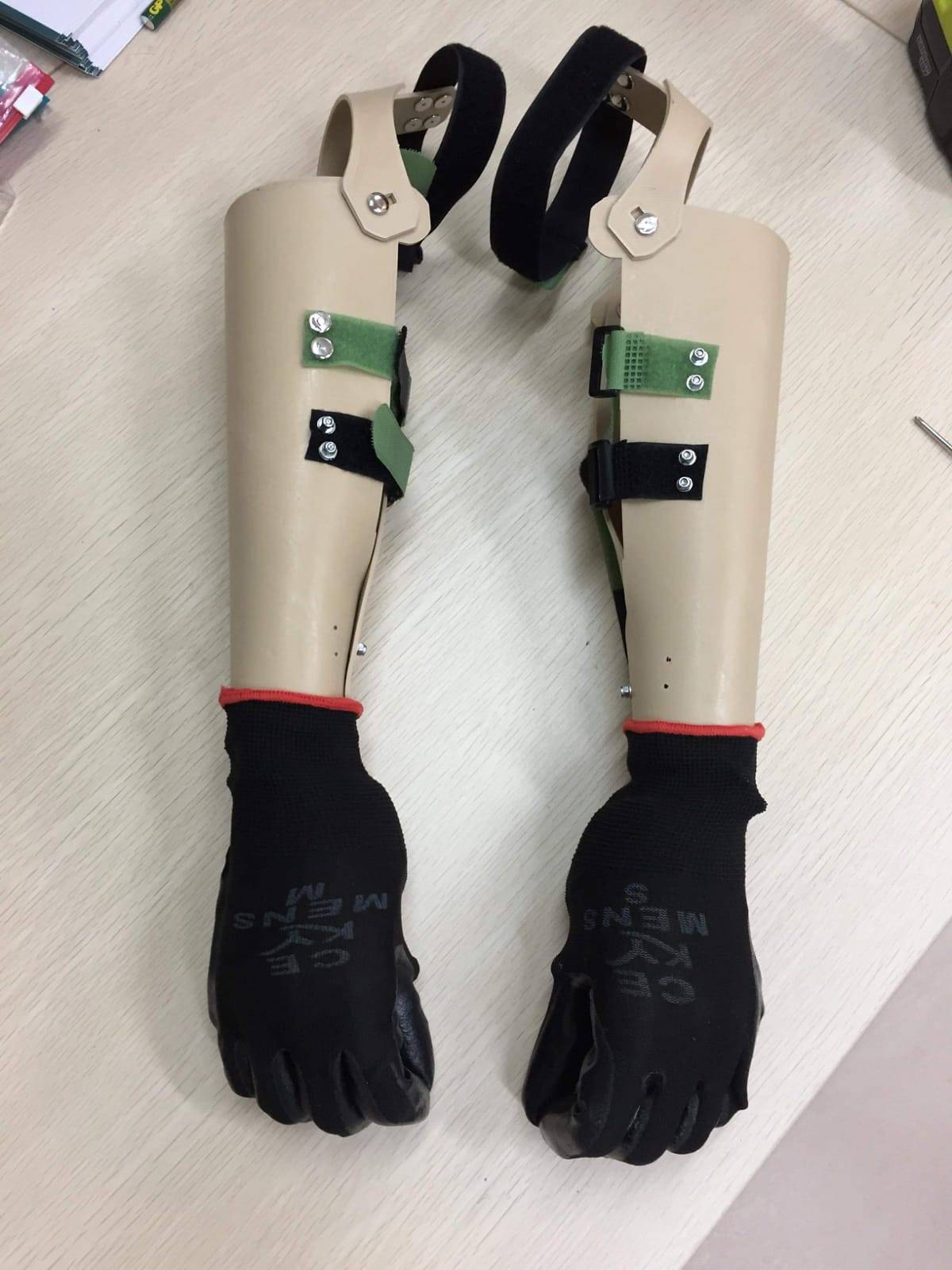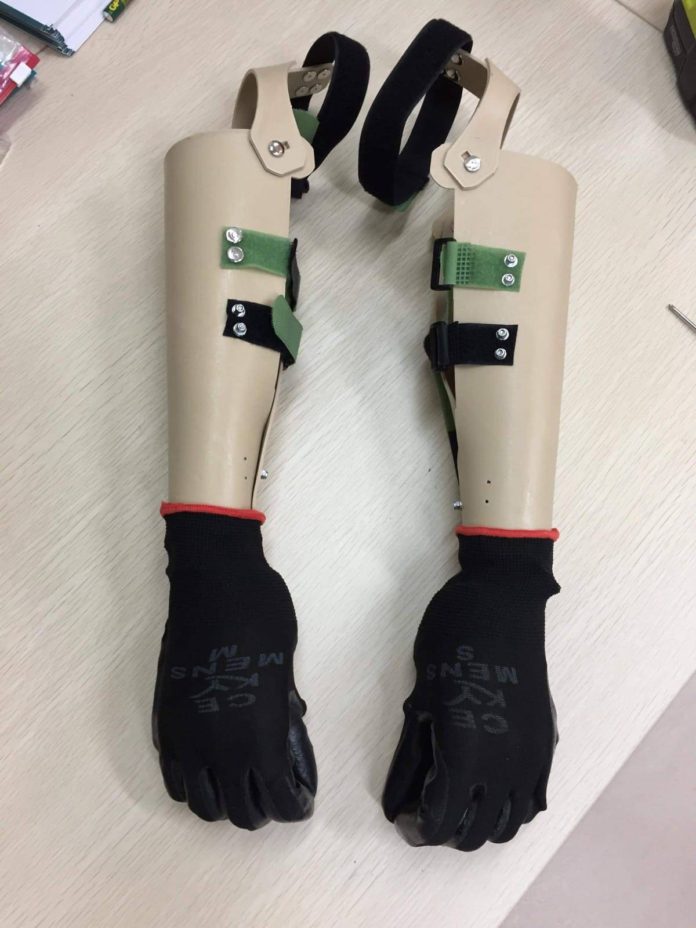SINGAPORE: Tan Whee Boon is not a man of many words, but the way he is living life after his health scare speaks volumes.
The 54-year-old former technician lost all his limbs after a plate of yusheng, a raw fish dish, caused Group B Streptococcus (GBS) infection that landed him in hospital. The drug that helped save his life also led to his hands and feet turning gangrenous, which he then decided to have amputated.
READ: ‘I find new goals every day’ – Technician who lost limbs after food poisoning
Overcoming his initial despair, Tan today can be found regularly participating in physically demanding activities like wheelchair rugby. He has also tried rock-climbing, swimming and scuba-diving.
Physical activities aside, he is also working up a sweat in the classroom. Tan told CNA in a recent interview that he signed up for a four-month course in Building Information Modelling (BIM) in April as he looks to get the skills necessary to rejoin the workforce for the first time since the health scare.
Yet even as things are falling into place for Tan, a more practical concern is standing in his way of taking the next step in reintegrating back to society: His dependency on his care-giver, a role usually taken on by his wife of nearly two decades Madam Choong Siet Mei, to get a job.
“The trainer actually asked … whether I want to take up the job (of a 3D modeller) or not. Then I told him that I’ll need a care-giver along,” he recounted.
Tan shared that while he is able to go out alone, he is unable to stay out for the whole day as he can’t perform certain activities like going to the restroom, even though he has prosthetic limbs.
“I think all the passers-by are willing to help … put on the fork, the spoon (on the prosthetic), whatever (help) I need,” he explained. “Except the washroom. That one I need to do it myself.”
The stoic 54-year-old said he has tried two prosthetic arms so far, but both had their shortcomings. The first came from the United States, but Tan said it was “cartoonish” and not very useful as the grip was slippery and could not grab on to a wash hose he needs to use to take showers.

The prosthetic arm developed by a volunteer from Hong Kong has a decent grip, but is heavy and “troublesome” to put on, Whee Boon said. (Photo: Tan Whee Boon)
The other pair was a prototype by a “volunteer from Hong Kong” who got in touch and shipped the prosthetic arms to him this June. While the grip is “good”, Tan found that the device was “too heavy” and he needed help from someone else to put it on.
“(Even then,) it takes about 10 to 15 minutes to wear.”
TRANSCENDING BORDERS
Help, when it eventually came, was from an unexpected place.
A nonprofit organisation called Tikkun Olam Makers (“repairing the world” in Hebrew), which organised its first makeathon in Singapore from Jun 14-16, has a stated aim of bringing together dedicated individuals who are passionate about harnessing technology to solve everyday problems for people with special needs. It has an ambitious aim of impacting 250 million people through its communities worldwide.
Through the makeathon, which saw almost 80 volunteers coming up with solutions for 13 specific needs, Tan was paired with a team of six strangers who hadn’t worked together until then.
Team PJ Prosthesis members came with very different skillsets: Two of them are physiotherapist students, another two are computer science researchers and one is a teacher. They were led by D J Saravana Kumar, who has more than a decade’s experience in 3D modelling.
Kumar, who works as a senior graphics designer at Fraunhofer Singapore, recounted that the pain points that Tan faced – such as having a lightweight prosthetic – were brought up during the brainstorming session at the three-day event.
It was clear then that the main challenge they would face would be making a prosthetic that would be effective at grabbing things, specifically the washing hose that Tan requested, said Kumar.
For the 41-year-old IT veteran, the real-time feedback that Tan gave during the development process was helpful, such as letting the team know what parts need more work on and if the grip was sufficient.
More than that, the support he gave to the team was invaluable: “He was at the side cheering us on, he brought us life,” Kumar said.
Tan chimed in, saying: “Participation (in the creation process) was the best part (of the whole makeathon experience) … I felt like I had a part to play.”
The end result: A 3D-printed rotating prosthetic arm that Tan could put on without help, and with a grabbing mechanism that helps him perform household tasks. It impressed the judges enough for Team PJ Prosthesis to place joint third, earning them a S$2,000 cash prize.
Tan hopes that the new prosthetic will enable him to go out alone and be independent. “With that, then all is fine,” he said with a smile.
BUDDING FRIENDSHIP
The helping hand, it would appear, extends both ways in this friendship: The two men meandered off midway during the interview to chat about a new version of the prosthetic.
A 3D rendering of the next iteration of the prosthetic arm in development, including a more multifunctional grip to hold things like spoons and bottles, said D J. (Image: D J Saravana Kumar)
For Kumar, an Indian national who uprooted his family of three to Singapore five years ago, the commitment to help Tan is driven from a realisation that this was an outlet he could use his skills to give back to the people of his adopted homeland.
Today, his spare time is given to fine-tuning the next version of the prosthetic, such as making the grip firmer – “The (first) prosthetic is still not effective at grabbing,” Tan said – and having a variation of grips so the user can hold things of different sizes from spoons to bottles.
He is also looking to incorporate a locking mechanism that would allow the grabbing attachment to be angled differently for different needs, and intends to 3D print the prosthetic “by next week”.
The other group members continue to be involved in the development process too, Kumar revealed. A WhatsApp group, named Boon_Group 9, is alive with suggestions and feedback that he incorporates into the design. The group’s Israeli mentors from the makeathon are included in the group too, he added.
Team PJ Prosthesis leader D J Saravana Kumar (top left) with team-mates Luis Sacco, Tan Juay Yong, Zhang Xingzi, Joan Toh Yuet Meng and Chia Zhen Da. Mr Tan Whee Boon (middle) and wife Choong Siet Mei (middle row, second from left) were also present at the makeathon. (Photo: Acompany)
“Previously, I would just spend my time playing games on my computer,” Kumar shared. “I wouldn’t know what to do with my spare time.
“Now I know what I want to do.”





